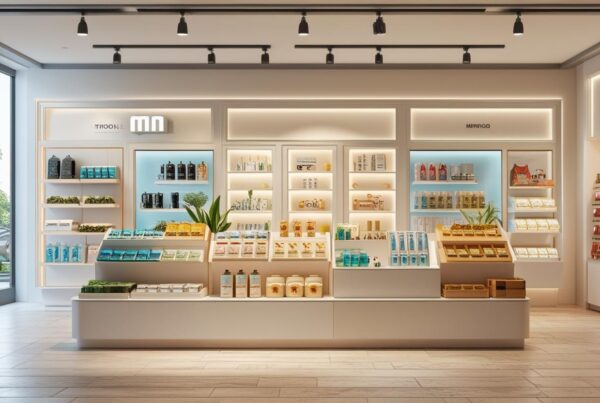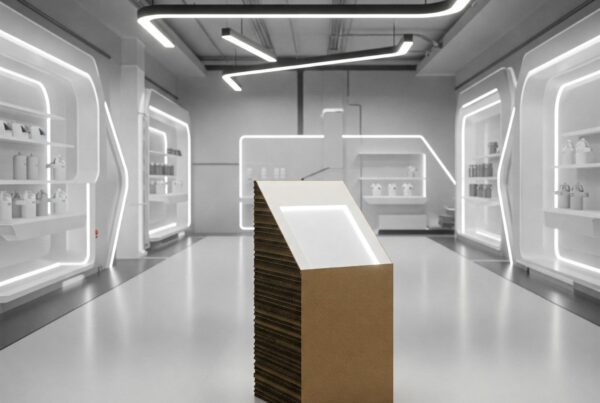Point-of-sale (POS) displays are an essential marketing tool, designed to attract attention and influence customer buying decisions. However, they often face challenges that can undermine their effectiveness. In this post, we’ll explore common problems with POS displays and practical solutions to fix them.
1. Poor Placement
The Problem:
A POS display is placed in the wrong location, such as an area with low foot traffic or obstructed visibility, won’t generate the intended impact. Customers may miss it entirely.
The Solution:
- Position Strategically: Place displays in high-traffic areas, such as near the checkout counter or store entrances.
- Analyze Store Layout: Use heat maps or observation to identify the best spots for maximum exposure.
- Adjust Based on Customer Flow: Monitor customer movement patterns and relocate displays as needed.
2. Unclear Messaging
The Problem:
If the messaging on the POS display is confusing, cluttered, or difficult to read, customers won’t understand the promotion or call to action.
The Solution:
- Simplify Text: Use clear, concise copy that immediately communicates the offer or value.
- Highlight Key Information: Ensure the most important details (e.g., discounts, benefits) are prominently displayed.
- Use Visual Cues: Incorporate bold fonts, arrows, or icons to guide the customer’s focus.
3. Outdated or Worn-Out Displays
The Problem:
A damaged or outdated display can create a negative impression and fail to attract attention.
The Solution:
- Regular Inspections: Periodically check displays for damage, fading, or wear and replace them as needed.
- Invest in Durable Materials: Use high-quality materials that can withstand wear and tear.
- Update Designs: Refresh displays regularly to keep them relevant and aligned with current promotions.
4. Overcrowded Display Areas
The Problem:
Cluttered display areas can overwhelm customers, making it difficult to focus on the products or promotions.
The Solution:
- Minimize Clutter: Limit the number of items or promotional materials on each display.
- Prioritize Key Products: Showcase a few high-margin or popular items to avoid overcrowding.
- Maintain Cleanliness: Keep the display area tidy and free of excess stock or debris.
5. Lack of Brand Consistency
The Problem:
A POS display that doesn’t align with your brand’s identity can confuse customers and dilute brand recognition.
The Solution:
- Follow Brand Guidelines: Use consistent colors, fonts, and logos that align with your overall branding.
- Incorporate Brand Messaging: Ensure the tone and style of the display reflect your brand’s voice.
- Collaborate with Designers: Work with your design team to create cohesive and impactful displays.
6. Insufficient Engagement Features
The Problem:
A static or uninspiring display may fail to capture customer attention in a competitive retail environment.
The Solution:
- Add Interactive Elements: Use QR codes, touch screens, or product demos to engage customers.
- Incorporate Lighting: Highlight key areas of the display with strategic lighting.
- Use Eye-Catching Graphics: Invest in bold visuals, videos, or animations to stand out.
7. Failure to Measure Effectiveness
The Problem:
Without tracking performance, it’s impossible to know if a POS display is driving sales or engaging customers.
The Solution:
- Monitor Sales Data: Track sales of featured products before and after implementing the display.
- Gather Customer Feedback: Use surveys or informal conversations to understand customer reactions.
- Experiment and Optimize: Test different designs and placements, and refine based on results.
.
Final Thoughts
POS displays can be powerful tools for driving sales and increasing brand visibility, but they’re only effective when implemented correctly. By addressing common issues like poor placement, unclear messaging, and lack of engagement features, you can ensure your POS displays perform at their best. Regular evaluation and optimization will help you stay ahead of the competition and maximize your return on investment.
Have you encountered other challenges with POS displays?
Contact Colourstone for obligation free advice on building your retail presence with your branded POS displays.


